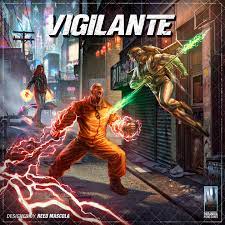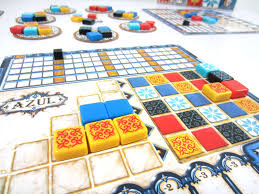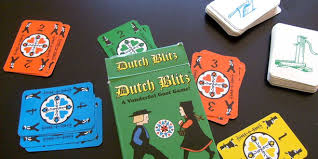How to reduce downtime in your game (and why you should do this)
Downtime can be a real downer. Nobody wants to sit around waiting forever for everyone else to take their turn. That’s why in today’s article we’re going to discuss why it’s a good idea to reduce downtime in your game and how to do this effectively.
When you’re playtesting your game, you need to be watching what players are doing, both when it is their turn and when other players are playing. Observe whether they are showing interest in the game or if they are unengaged.
You want people to be looking at the board or their cards, not their phone. If turns are so long and the game state changes so much between turns that a player can go make a sandwich without missing a thing, you’ve got an issue that you need to deal with.
You want people playing your game, not just waiting around. Very few modern board games include “miss a turn” and player elimination, because these mechanics are in effect saying, “don’t play this game” (at least for the moment). You want much less of this feeling and much more of the feeling of players being fully engaged, watching what’s going on, planning and plotting, and getting ready for what they’re going to do next.
Just a note that this discussion is focused on competitive games, as co-op games already have built-in collaboration and all players typically are involved to some extent in other player’s decisions.
So, let’s talk about how you can reduce downtime in your game to increase player engagement.
Make turns faster
Sometimes as game designers we add a lot of complexity or phases to our games. We ask that players do a number of things on their turn, which can increase the time they need to think and carry out their turn.
Often, it can be better to just ask players to do one thing on their turn. You don’t want to oversimplify this and make the choice obvious every time though. However, you can give players interesting options, such as, “perform one of the following actions on your turn”:
- Take $5 from the reserve
- Purchase a card from the market
- Reserve a card from the market
- Trade in cards for a reward
This gives players options to consider and lets them plan ahead for future turns without slowing down the flow of the game.
My friend and fellow game designer, Reed Mascola, has a wonderful social deduction/strategy game called Vigilante. I playtested this game multiple times at different game design events and while I enjoyed the game, the one thing I noticed was that turns took quite a while. Most of this was due to the fact that each player gets to take 4 actions during their turn and after each action, the player had yet another thing to consider, as they may have drawn a card or taken an action that opened up even more possibilities. A turn could easily take 2-3 minutes, so in a 5-player game, it was often around 10 minutes between a player’s turns.

I suggested that perhaps each player could take just one action at a time, which would result in player turns coming around much faster. He liked the idea and tested it out. It worked really well and he implemented this into the game. I played it again and it was noticeably faster coming back around to your turn, but not only that, you also had more to think about on your turn and the state of the game didn’t change too greatly, so you felt more engaged and in control.
If turns are taking too long in your game, consider reducing the number of actions a player can take on their turn. Also, if your game has a number of phases, see if you can have each player complete one phase before moving on to the next rather than asking each player to complete all the phases on their turn before moving on to the next player.
Make sure people have things to do when it’s not their turn
I mentioned earlier that you want players to continue to feel engaged and that they are doing something valuable, even when it’s not their turn, but it’s helpful to go into this in more detail.
Give players something to do when other players are taking their turn. It could be strategizing, planning, or even discussion and negotiation, depending on the game. There should be things that a player has to consider in between turns – not enough to cause AP (analysis paralysis) but enough to have them thinking ahead to what they should do next.
A simple example is Azul. While other players are taking their tiles, you’re constantly thinking about which available tiles will help you the most and coming up with a backup plan in case other players take the ones you had an eye on.

Keep in mind that if the board state changes drastically between turns, it will be much more difficult for players to plan for their next turn. So, look for ways to prevent everything from changing too much if possible (such as limiting a player’s actions on their turn).
Consider simultaneous actions
While this won’t work for many games, it’s at least worth considering if your game would benefit from simultaneous actions, either throughout the game or for specific phases of your game.
For example, in Quacks of Quedlinburg, players all simultaneously draw chips from their bag and place them on their player board. Once all players have ended their turn by either deciding to stop or going bust, the game moves into the scoring phase for that round.

There would be little benefit to each player taking turns drawing and placing their chips other than ensuring no player is cheating (which your friends hopefully wouldn’t do!) but there would be a big downside of longer turns that could make the game drag on. There’s little a player can do to plan ahead when it isn’t their turn, as it’s up to the luck of the draw. They have to make the decision after each placement whether to continue or not. So, simultaneous turns make perfect sense here.
If your game requires players to do something that they could all be doing at the same time without impacting other players, it is worth at least testing this to see if it works and keeps the game moving along faster. Roll and writes (and flip and writes, etc.) often work well with simultaneous play, as something is presented to all players such as a card or die roll and everyone needs to figure out the best way to apply this on their sheet.
However, this won’t work in a lot of games, particularly if there is anything that must be done in some specific order. Simultaneous play might then add an element of real-time play where the first player to pick up a card gets it, which may not be the experience you are aiming for in your game.
Simultaneous actions can also work well in real-time games. In Dutch Blitz, for example, all players are frantically trying to play their cards on different piles based on colours and sequencing, so that they can be the first player to shed all their cards. This game really only works in a simultaneous context. If players just took turns playing one card each, all the tension would be gone and it would be completely up to the luck of the draw whether you could play a card on your turn or not.

Wrapping it up
If you’re finding that players have too much downtime in your game, there are a number of different methods you can apply to attempt to reduce downtime. Shorter turns, giving players something to do on other player’s turns, and introducing simultaneous play are 3 effective ways to tackle this issue.
What game do you feel handles downtime really well?
Please leave a comment and share your experience.

2 comments
Michael Faciane
Another option to keep players engaged when it isn’t their turn is to offer some sort of reward based on other players’ actions. If another player does x, you gain y. If I know that there are resources available to me based on the play of other players, I am more inclined to pay attention to their turns.
Joe Slack
That’s another great suggestion, Michael! Yes, if I know that someone else’s action may have an impact on me, especially if I might earn something as a result, I’ll be paying closer attention!